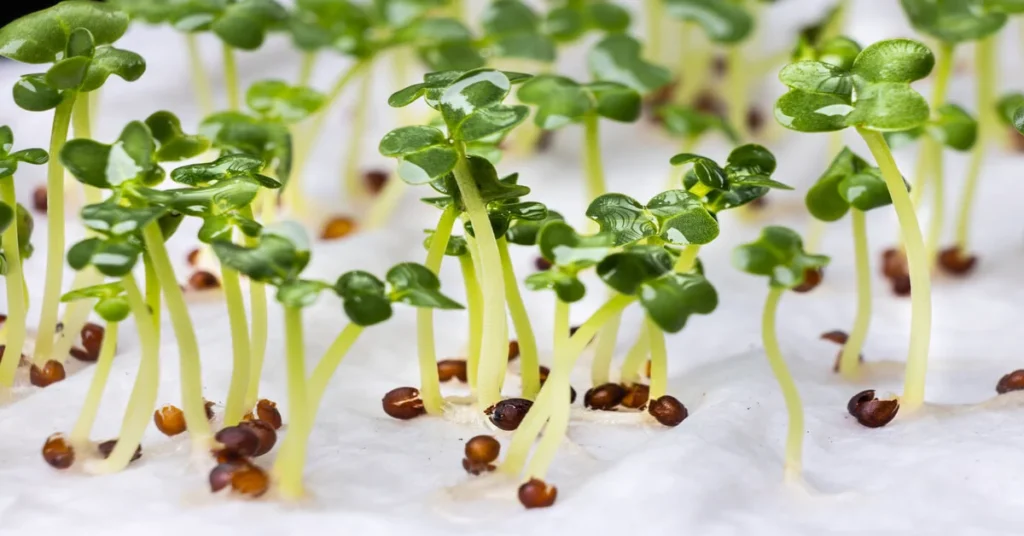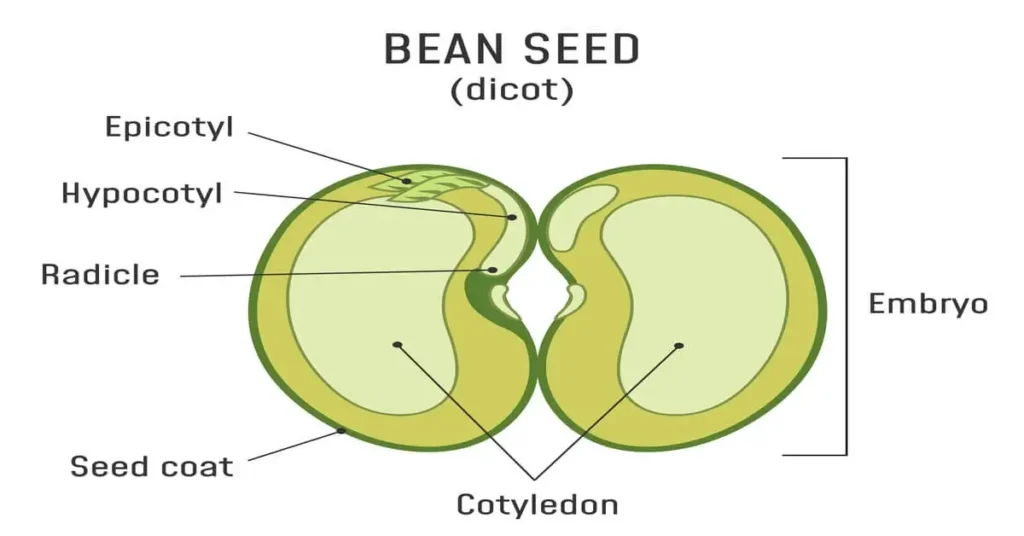Starting seeds can be a challenging process, especially for new gardeners. But did you know that you can germinate seeds in a paper towel?
This simple method, also known as the paper towel germination method, is a highly efficient way to germinate seeds, resulting in a higher germination rate than other methods.
Why Germinate Seeds in Paper Towels?
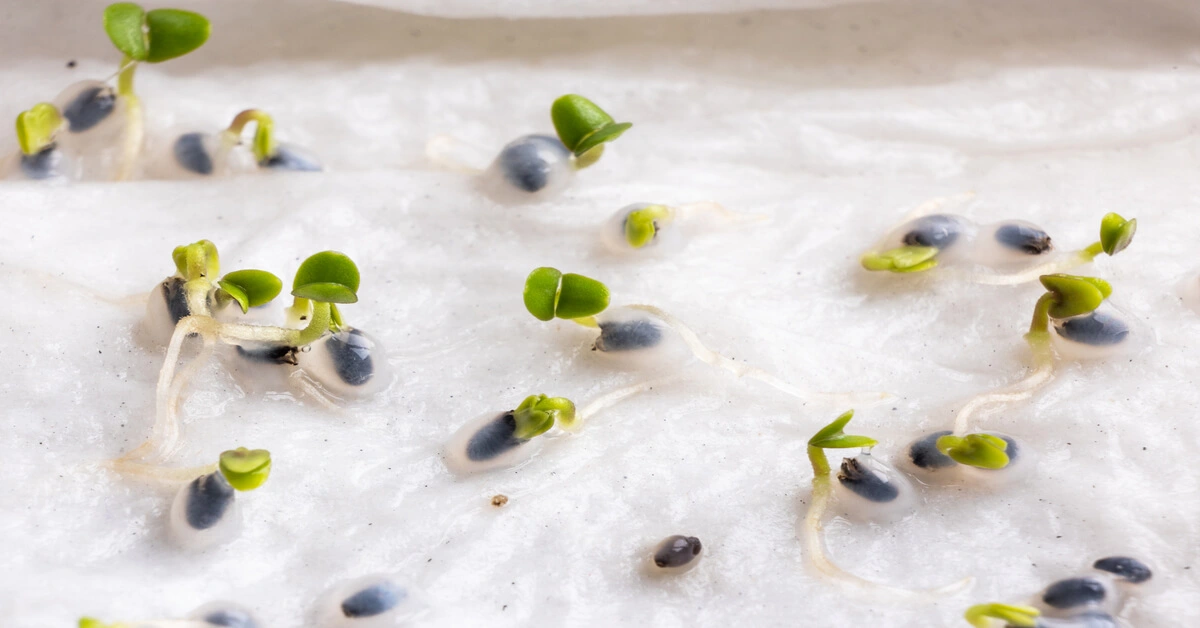
Starting seeds in paper towels is an excellent way to give your seeds a head start, especially old seeds or types of seeds that take a long time to germinate, like pepper seeds.
This method can save you time, allowing seeds to sprout faster, and also helps you identify viable seeds before planting them in the soil.
It’s also a convenient method to conduct a seed germination test to check the viability of your seeds, especially if you have a packet of seeds that’s been sitting around for a while.
Choosing the Right Seeds
The beauty of the paper towel method is that it works for many seeds. You can germinate vegetable seeds, flower seeds, and other kinds of seeds.
However, smaller seeds can be a little more challenging to handle once they’ve sprouted, so it’s best to stick to larger seeds, like tomato seeds, in paper towels.
How to Germinate Seeds in Paper Towels: A Step-by-Step Guide
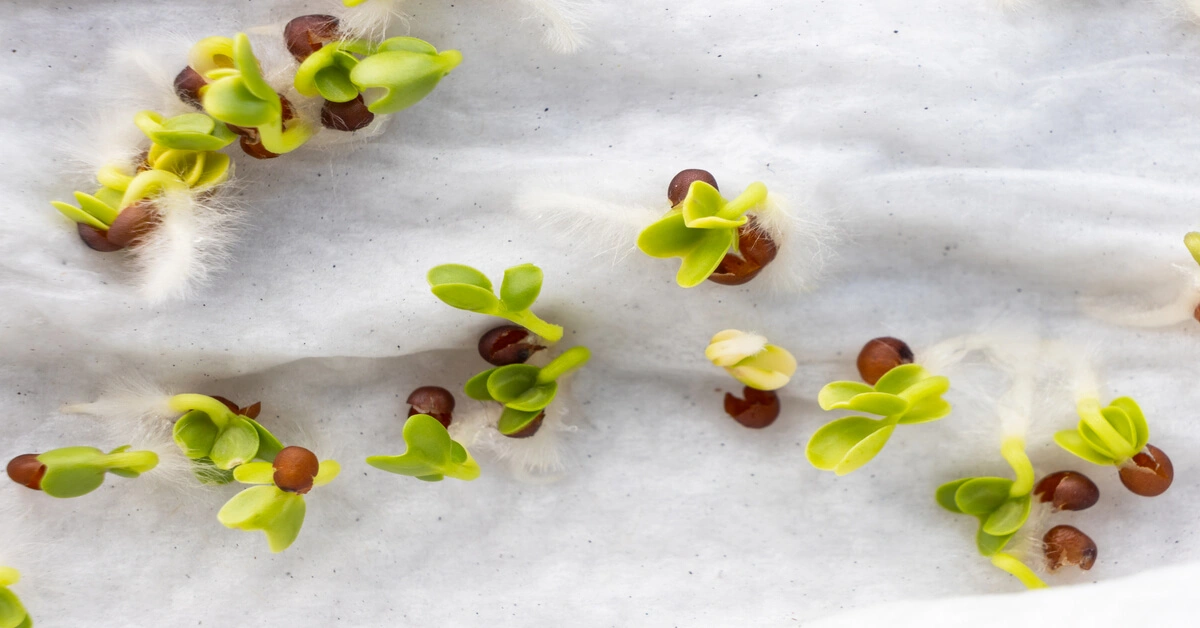
Step 1: Gather your materials
To start germinating your seeds, you’ll need your chosen seeds, paper towels or coffee filters, a plastic bag, and water.
Step 2: Prepare the paper towel
Lay your paper towel on a flat surface and dampen it. It should be wet but not soaked.
Step 3: Place your seeds
Place ten seeds (or as many seeds as you’d like to germinate) on the damp paper towel. Spread them out so they have space to sprout.
Step 4: Fold the paper towel
Please fold the paper towel in half over the seeds to ensure they’re covered.
Step 5: Put the paper towel in the plastic bag
Slide the folded and seeded paper towel into the plastic bag. Creating a mini greenhouse that keeps the seeds moist and warm, perfect conditions for germination.
Step 6: Find a suitable location
The bag with seeds inside should be placed in a warm area, away from direct sunlight—some seeds like warmth but not direct sunlight to germinate.
Monitoring Your Seeds and Transplanting
After setting up your seeds for germination, keeping an eye on them is crucial. Check your seeds daily. Ensure the paper towel stays damp but not soaking wet.
Once the seeds have germinated (you’ll see small roots and shoots), they’re ready to be transplanted into the soil. Be careful when transplanting sprouted seeds; they’re very delicate.
Use tweezers if necessary, and if a seed still has the paper towel attached, you can plant it with the paper towel still attached to prevent damage.
Troubleshooting: When Seeds are Not Germinating
Despite your best efforts, you may find some seeds not germinating. Various factors could be at play here, such as the age of the seed, incorrect storage, or poor seed quality.
Seeds that have yet to sprout after three weeks are likely unviable and should be discarded.
Germinating Seeds in Soil vs. Paper Towel
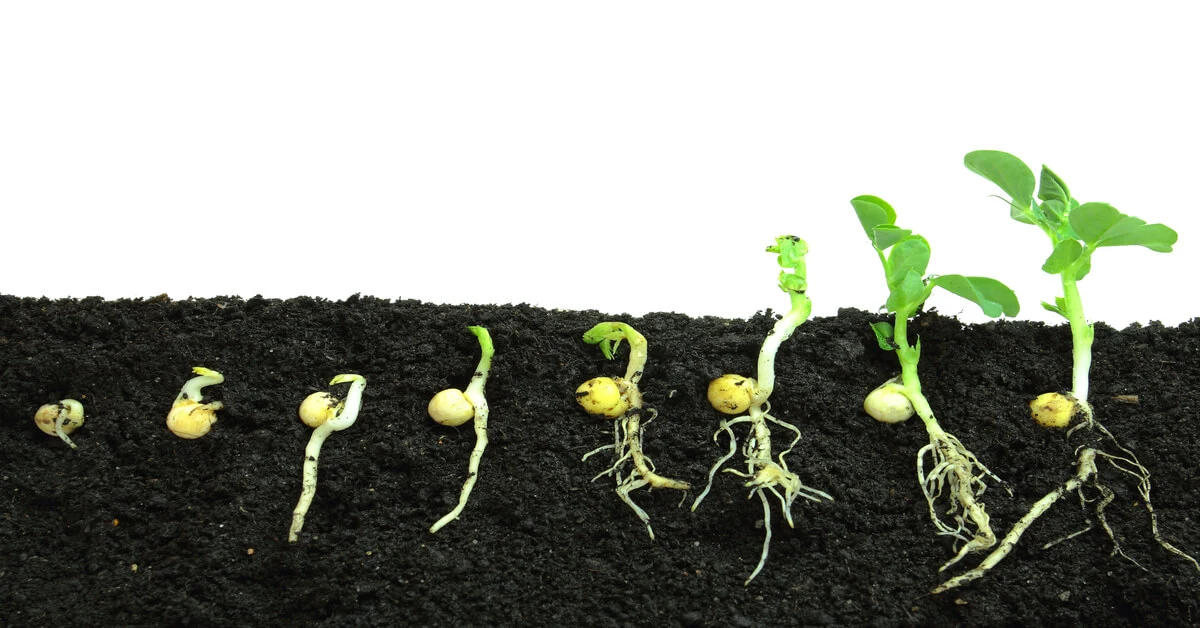
Gardeners typically use two main methods when starting seeds in the soil and using the paper towel germination method. Both have their advantages and peculiarities, which we’ll explore below.
Starting Seeds in Soil
Starting seeds in soil is the traditional method most gardeners use. It’s simple – you plant your seeds directly into the soil and wait for them to sprout.
One significant benefit is that once the seeds sprout, they can continue growing in the exact location, undisturbed. They reduce the risk of damaging the delicate roots of your seedlings during transplantation. In this critical phase, the plants are most vulnerable.
Seeds germinate in soil under the right combination of warmth, moisture, and light, depending on the type of seed. The soil provides a natural buffer for moisture and temperature fluctuations, benefiting seed starting.
However, knowing if seeds are viable when starting in the soil can be tricky. You may wait for weeks, only to discover that the seeds were duds. Also, seeds may have varying germination rates, resulting in uneven growth rates and resource competition.
Germinating Seeds in Paper Towel
On the other hand, germinating in a paper towel involves placing seeds between layers of damp paper towels and then into a plastic bag to maintain humidity. This method offers a few unique benefits.
First, you can see when the seeds have sprouted, making it easier to track germination. Seeing the root growth process firsthand is satisfying and educational, which can be a fun project, especially for kids.
Second, the paper towel method allows you to test if your seeds are viable before planting them in the soil. By germinating seeds this way, you can ensure that you only plant seeds that have successfully sprouted, making it an efficient use of resources.
However, one potential downside of the paper towel method is the delicate process of transplanting the germinated seeds into the soil. This process requires careful handling to avoid damaging the sprouted seeds.
Conclusion
Both methods have their pros and cons. Choosing between starting seeds in soil or germinating in paper towels depends mainly on your preference, your resources, and the specific needs of the seeds you’re trying to grow. Experiment with both methods to find out which one works best for you and your garden.

